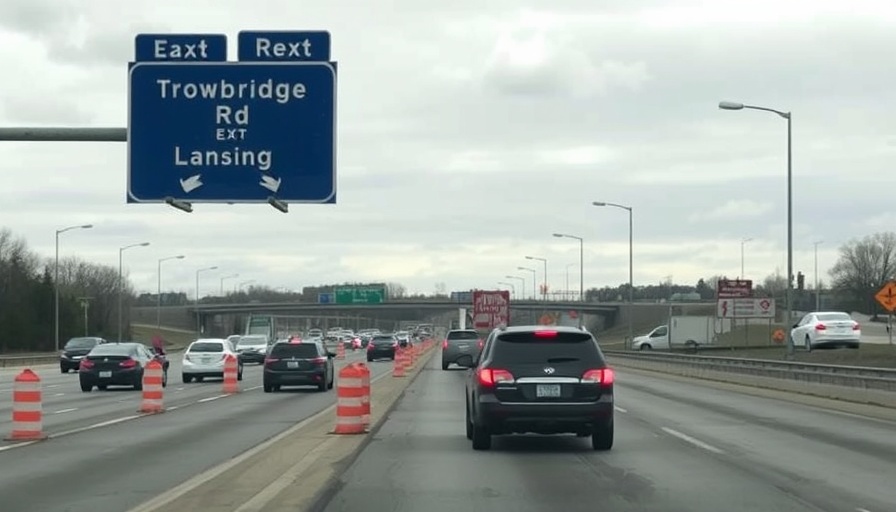
Rethinking Michigan's Road Funding Amid Rising Costs
As the cost of repairing Michigan's roads continues to climb—nearly tripling over the last two decades—a recent report from the Citizens Research Council of Michigan has stirred a crucial conversation around the state's outdated funding mechanisms. With Michigan currently ranking 40th in road conditions and 30th in road funding levels, experts argue the need for a modernized approach is more pressing than ever.
Understanding the Current Problem
Michigan's existing funding framework, governed by Public Act 51, is nearly 75 years old and was never designed to meet today's transportation demands. According to Eric Paul Dennis, an associate researcher at the Council, this law “just isn’t working for Michigan.” The complex and convoluted nature of the existing system fails to adequately allocate resources where they are needed most.
Historical Context: How Did We Get Here?
Understanding the context of Michigan’s current road funding reveals how historical policies have shaped today's challenges. Public Act 51 was established in 1951, a time when road infrastructure and vehicular traffic were significantly different from what they are now. Back then, the anticipated growth of the automotive industry was perhaps underestimated, leading to a road system that is now struggling under modern traffic demands.
Counterarguments: Defending the Status Quo
While many support new funding strategies, some argue that existing mechanisms ensure a level of stability authorized by a long-standing law. Proponents of Public Act 51 claim that it has kept funding streamlined and predictable, albeit at the cost of flexibility. However, with mounting evidence of its inadequacy, many experts believe maintaining the status quo is no longer justifiable.
The Case for Comprehensive Reform
A complete overhaul of Michigan's transportation funding is essential. The Citizens Research Council’s report suggests developing new legislation that offers a “rational formula” for resource distribution based on current needs. This could empower local governments to advocate for their communities effectively by allowing them more control in the financing of road repairs.
Future Insights: What Might a New Plan Look Like?
In envisioning what an effective road funding system could resemble, experts propose integrating technology and data analytics to better assess infrastructure needs. By embracing contemporary methods, Michigan can prioritize repairs where they are genuinely needed most. For instance, adaptation of comprehensive planning models that account for population density, current traffic patterns, and technological advancements could improve funding allocations.
Practical Tips for State Legislators Moving Forward
For state lawmakers moving forward, the report highlights several actionable insights: reevaluating the permitting processes for mining road materials, providing local governments autonomy over certain road repair projects, and examining other funding models that prioritize efficiency and need-based distribution.
Call to Action: Engaging the Community in Discussion
As dialogues about road funding reform emerge, it’s vital for Michigan residents to engage with their local representatives. Community input can influence decision-making and advocate for a modernized road infrastructure that meets both current demands and future growth.
The shifting landscape of Michigan’s road conditions paints a stark picture; without significant changes to the funding framework, residents face continued disparities between necessary repairs and available resources. Stakeholders must act decisively as part of this vital conversation.
 Add Row
Add Row  Add
Add 




 Add Row
Add Row  Add
Add 

Write A Comment